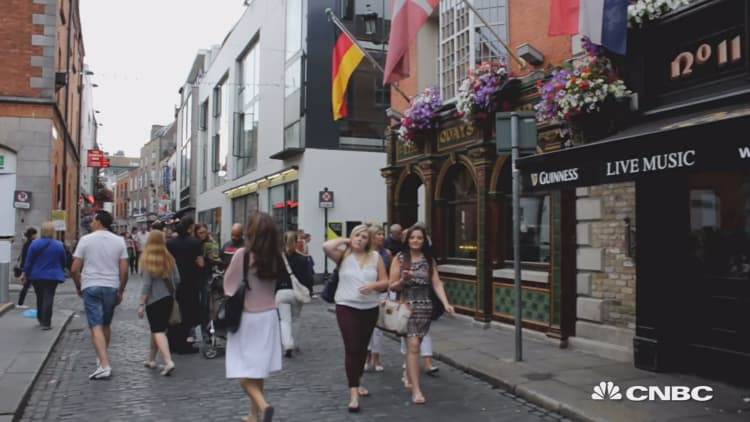Ireland's dominant political forces were left considering an unprecedented alliance on Saturday, after two exit polls suggested voters would give Prime Minister Enda Kenny's ruling coalition the top vote— but deny him a stable ruling coalition.
Polls suggest that Fine Gael will remain the largest party, but only narrowly so. The main opposition, Fianna Fail, appears to be running a close second, suggesting that Kenny will need Fianna Fail to form a government.
After the exit results became clear, Kenny ruled out resigning. "Democracy is always exciting but it is merciless when it kicks in," RTE News reported Kenny to have said. He also rejected another Fine Gail-Labor coalition government.
Kenny looks to have become the latest victim of an anti-establishment groundswell spreading across Europe even though his premiership has seen Ireland bounce back from a bailout to become the continent's fastest growing economy.
Kenny's center-right Fine Gael will win the election with 24.8 percent of the vote, the exit poll for national broadcaster RTE said. That is far below the 36 percent it won five years ago and the 30 percent opinion poll rating it enjoyed at the start of campaigning.
With partners Labour in line to win just 7.1 percent of the ballot, the only viable option for government appeared to be a problematic alliance between historic rivals Fine Gael and Fianna Fail, which the exit poll showed rose to 21.1 percent.
"Either we could have another election now and do away with the count, or we'll let them muddle around for a month or so and maybe they can think the unthinkable," said Michael Marsh, a professor of politics at Trinity College Dublin.
"It's hard to see any kind of government without Fine Gael and Fianna Fail getting together."

No previous Irish election has seen Fine Gael and Fianna Fail -- heirs to opposing sides in a civil war almost a century ago -- fall below a combined 50 percent of the vote.
Framed as a debate over how to distribute the profits of accelerating economic growth, Kenny's campaign to "keep the recovery going" rang hollow with many voters yet to feel any impact after years of austerity.
One Fine Gael junior minister said he would "of course" be open to a prospective deal with Fianna Fail after an exit poll showed a similar result after polls closed on Friday. He was the first senior member of either party to say so after weeks of rejecting the notion.
While Fine Gael and Fianna Fail have few policy differences, the parties showed no appetite to team up during the campaign with one minister describing the prospect as a "nightmare".
The two parties which have swapped power since the foundation of the state and the established Labour party were shunned by voters in favor of independent candidates, smaller parties and left-wing Sinn Fein, which polled at 16 percent.
"We're looking at major transformation of our party system. 2011 was meant to have been an earthquake election ... it wasn't, but this is," said David Farrell, Professor of Politics at University College Dublin.
"We're now talking about a party system that is in major change, with forces on the left now getting over a third of the vote. We're into unknown territory, as it were, here."
--CNBC.com contributed to this report.


